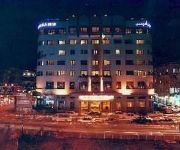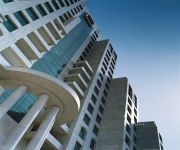Safety Score: 5,0 of 5.0 based on data from 9 authorites. Meaning it is not safe to travel Syria.
Travel warnings are updated daily. Source: Travel Warning Syria. Last Update: 2024-08-13 08:21:03
Delve into Ḩārat al Yahūd
The district Ḩārat al Yahūd of Damascus in Damascus Governorate is a district located in Syria and is a district of the nations capital.
In need of a room? We compiled a list of available hotels close to the map centre further down the page.
Since you are here already, you might want to pay a visit to some of the following locations: Jaramana, Babila, Al Hajar al Aswad, Kafr Batna and `Irbin. To further explore this place, just scroll down and browse the available info.
Local weather forecast
Todays Local Weather Conditions & Forecast: 17°C / 63 °F
| Morning Temperature | 12°C / 53 °F |
| Evening Temperature | 17°C / 63 °F |
| Night Temperature | 14°C / 58 °F |
| Chance of rainfall | 0% |
| Air Humidity | 41% |
| Air Pressure | 1019 hPa |
| Wind Speed | Gentle Breeze with 6 km/h (4 mph) from North-East |
| Cloud Conditions | Clear sky, covering 0% of sky |
| General Conditions | Sky is clear |
Friday, 22nd of November 2024
18°C (64 °F)
15°C (59 °F)
Sky is clear, light breeze, clear sky.
Saturday, 23rd of November 2024
18°C (65 °F)
16°C (61 °F)
Sky is clear, light breeze, clear sky.
Sunday, 24th of November 2024
19°C (67 °F)
11°C (51 °F)
Sky is clear, moderate breeze, clear sky.
Hotels and Places to Stay
SEMIRAMIS
FOUR SEASONS DAMASCUS
QUEEN CENTRE ARJAAN BY ROTANA
Videos from this area
These are videos related to the place based on their proximity to this place.
Minaret of Jesus in Damascus
Minaret of Jesus is one of 3 minarets of the Great Umayyad Mosque in Damascus.
Good Friday procession in Damascus, Syria
In the weeks before Easter the bands of the churches in Damascus are rehearsing for the most important holidays of the Eastern churches, GFood Friday and Easter. As there are some 20 Christian...
New Damascus Pulse || نبض دمشق الجديدة
دمشق كما هي، إنطلاقاً من المزة حتى قاسيون وصولاً إلى مشروع دمر ثم العودة من طريق الربوة إلى ساحة الأمويين،...
أغنية نادي الوحدة الدمشقي (جوا الشام) Alwahdeh Club , Damascus Syria
تأسس سنة : 1928 كل نادي الوحدة الملقب ( بالبرتقالة الدمشقية ) ركيزة أساسية من ركائز رياضة العاصمة خاصة والرياضة...
Hakawati at al-Nawfara coffeehouse, Damascus
http://www.ibnibnbattuta.com/blog/syria/ - The hakawati (storyteller, حكواتي) Abu Shadi at al-Nawfara (النوفرة) coffeehouse in the Old City, Damascus, Syria.
2005 Syria Damascus, Hanania, Bab Sharqi, Bab Tuma, Ananie
Damas fut l'un des berceaux du christianisme et vit Saint-Paul prononcer ses premières prédications, notamment dans l'église d'Ananie, la plus vieille de Syrie (aujourd'hui dans le quartier...
العلامة سارية الرفاعي يهدد بإشعال سورية syrian sheikh in Damascus
1/8/2011 first day of Ramadan In khalid bin alwaleed Mosque,sheikh sariya alrefaee is threating syrian Government to withdraw from hama after attacked by thier army ,Or all syrian People will rage.
Videos provided by Youtube are under the copyright of their owners.
Attractions and noteworthy things
Distances are based on the centre of the city/town and sightseeing location. This list contains brief abstracts about monuments, holiday activities, national parcs, museums, organisations and more from the area as well as interesting facts about the region itself. Where available, you'll find the corresponding homepage. Otherwise the related wikipedia article.
Bab Kisan
Bab Kisan is one of the eight ancient city-gates of Damascus, Syria. The gate, which is now located in the southeastern part of the Old City, was named in memory of a slave who became famous during a conquest by the Caliph Mu'awiya. The wall was built during the Roman era and was dedicated to Saturn. Bab Kisan was the escape route of St Paul. Paul settled in Damascus after having claimed to have witnessed a vision where Jesus was on a road to the city.
Al-Zahiriyah Library
The Az-Zahiriyah library in Damascus, Syria dates back to 1277, taking its name from its founder Sultan Baibars (1223–1277). Building this library was his father’s idea but he died before he could achieve it. Initially Az-Zahiriah was a public school in charge of teaching Quranic sciences. The decorations, carvings, and writing on the building walls, in addition to the gate which bears geometric designs and patterns, make the library one of the most important buildings in Damascus.
Bab al-Saghir
Bāb Saghīr, also called "Goristan-e-Ghariban", is an ancient cemetery and street in Damascus, Syria, with tombs on either side of the road. It is located in the Dimashq neighborhood, southwest of Umayyad Mosque.
Azm Palace
Azm Palace is a palace in Damascus, Syria which was originally built in 1750 as a residence for the Ottoman governor of Damascus As'ad Pasha al-Azm. The palace now houses the Museum of Arts and Popular Traditions.
Bab Tuma
Bab Tuma is a borough of Old Damascus in Syria, one of the gates inside the historical walls of the city, and a geographic landmark of Early Christianity. It owes its name to Thomas, one of the twelve apostles of Jesus Christ. Famous residents included: Saint Paul the most notable of Early Christian missionaries (hence expressions such as “the road to Damascus experience”), Saint Thomas himself who after lending his name to the neighborhood went on to explore India.
Chapel of Saint Paul
The Chapel of Saint Paul is a modern stone chapel in Damascus that incorporates materials from the Bab Kisan, the ancient city gate through which Paul was lowered out of a window in Acts 9:25.
Damascus Straight Street
The Damascus Straight Street; biblical wording, Street Called Straight, is the Roman street that runs from east to west in the old city of Damascus, Syria. It was visited by St. Paul as recorded in the book of Acts and contains several interesting sights from the Roman, Christian and Islamic periods. Under the Greeks, the old city of Damascus was laid out after the grid pattern designed by Hippodamus.
Bab al-Faradis
Bab al-Faradis or Bab al-Amara is one of the eight ancient city-gates of Damascus, Syria. One of the city's northern gates, it was named "the paradise gate" in the Roman age because it was surrounded by numerous water sources and gardens. The other name, Bab Al-Amara, refers to a name of a famous district in the old city where people used to meet in the 14th century.
Bab al-Salam
Bab al-Salam (The Gate of Peace) is one of the eight ancient city-gates of Damascus, Syria.
Bab Sharqi
Bab Sharqi, also known as the Gate of the Sun, is one of the eight ancient city gates of Damascus, Syria, and the only original Roman gate still standing. Its modern name comes from its location in the eastern side of the city. The gate also gives its name to the Christian quarter surrounding it. The grand facade of the gate was reconstructed in 1960s.
House of Saint Ananias
The House of Saint Ananias (also called Chapel of Saint Ananias) is the ancient alleged house of Saint Ananias, in the old Christian quarter of Damascus, Syria. It is said by some to be the house where Ananias baptized Saul. Located near Bab Sharqi (Eastern Gate), at the very end of the Street Called Straight. Five metres below ground level, the church is supposedly the cellar of the House of Ananias, but more likely it is built at the level of the Roman street.
Beit al-Mamlouka Hotel
Beit al-Mamlouka is a luxury boutique hotel located in the old city of Damascus, Syria. It was established in 2005 in the city's oldest borough, the Christian quarter of Bab Touma ("St. Thomas' Gate"). The hotel is a restoration of a 17th century old Damascene house and offers 8 different rooms each named after a famous historic figure of Arab or Muslim history, like Averroes and Baybars.
Sayyidah Ruqayya Mosque
Sayyidah Ruqayya Mosque is a shrine located in Damascus, Syria, that contains the grave of Sukayna (née Ruqayyah), the infant daughter of Husayn ibn ‘Alī. After enduring the advent of Karbalā and the torturous journey to Damascus that followed it, Sukayna died at the age of four in Yazid's prison, where she was originally buried. Years later however, upon the flooding of her gravesite, her grave was reopened and she was moved to the site where the Mosque now stands.
Bayt al-Aqqad
Bayt al-Aqqad (Aqqad House) is an old Damascene house that hosts the Danish Institute in Damascus, Syria. The history of the building is more than 2000 years: Remains of the theatre of Herod the Great were found in the outer walls and now forms a part of the wall in the secretary’s office. Other parts of the house include the northern and southern buildings which were built in the late 15th century in a late Mamluk style and decoration.
Maktab Anbar
Maktab Anbar (Anbar Office) is an old house in the center of Old Damascus near the Umayyad Mosque and a short distance from the Street Called Straight. The house was built as a private residence by a local Jewish notable Mr. Anbar in the mid 19th century. The house is built around three courtyards, first the formal reception courtyard, behind this the attractive female courtyard, and finally the spartan servants' courtyard.
Khan As'ad Pasha
Khan As'ad Pasha is the largest khan in the Old City of Damascus, covering an area of 2,500 square metres . Situated along Al-Buzuriyah Souq, it was built and named after As'ad Pasha al-Azm, the governor of Damascus, in 1751-52. Khan As'ad Pasha has been described as one of the finest khans of Damascus, and the most "ambitious" work of architecture in the city. Throughout the Ottoman era, it hosted caravans coming from Baghdad, Mosul, Aleppo, Beirut and elsewhere in the Middle East.
Khan Sulayman Pasha
Khan Sulayman Pasha is a large khan in the Old City of Damascus. Located in the walled city of Damascus on the eastern side of the Street Called Straight, facing Suq al-Khayyatin and Al-Buzuriyah Souq. It was built and named after Sulayman Pasha al-Azm, the governor of Damascus, in 1732-36. The khan is popularly known as Khan al-Hamasina because traders from Homs used to rent its shops and warehouses.
Al-Buzuriyah Souq
Al-Buzuriyah Souq is a historical souk located to the south of the Umayyad Mosque inside the old walled city of Damascus, Syria. The souk is famous for its spices vendors, and the many historical khans located along it, including Khan As'ad Pasha. On its southern end it meets Medhat Pasha Souq.
Medhat Pasha Souq
Medhat Pasha Souq (also called Al-Taweel Souq) is a historical souk which forms the western half of the Street Called Straight inside the old walled city of Damascus, Syria. It was named after the Ottoman governor of Syria Midhat Pasha who renovated it and ordered its coverage with a lead-shade. Many smaller souqs branch out of Medhat Pasha including al-Buzuriyah Souq and al-Harir Souq. Many important sites are located along the street including Maktab Anbar.
Khan al-Harir
Khan al-Harir is a large khan in the Old City of Damascus covering an area of 2,500 square metres . It was built on the orders of Darwish Pasha, the governor of Damascus, in 1573-74. Darwish Pasha founded it as a waqf for the benefit of the Darwish Pasha Mosque. The Khan was the first great caravanserai inside the old city walls of Damascus. Its construction marks the beginning of a shift in mercantile and trade activity to the area southwest of the Umayyad Mosque.
Mariamite Cathedral of Damascus
Mariamite Cathedral of Damascus is one of the oldest Greek Orthodox churches in Damascus, Syria and holds the seat of the Greek Orthodox Church of Antioch. The church complex is located on the Street Called Straight.
Al-Shaghour
Al-Shaghour is a neighborhood located in the old walled city of Damascus, Syria. Al-Shaghour is one of the oldest recorded neighborhoods in the city. Parts of the neighborhood made up the Jewish quarter, as it had the largest Jewish community in the city. The neighborhood is also home for many of the prominent Shiite families in Damascus. Al-Ameen street, named after a prominent Shiite figure, is the main road in the neighborhood and accommodates the market place and the main shops.
Qubbat al-Khazna
Qubbat al-Khazna, meaning the "Dome of the Treasury", is an old structure, located inside the courtyard of the Umayyad Mosque in Damascus, Syria. It is an octagonal structure decorated with mosaics, standing on eight Roman columns. The Dome of the Treasury, like the mosque's prayer hall facade, was once completely covered in the colorful mosaic decoration for which the mosque was famous. The dome was built under orders from the governor of Damascus, Fadl ibn Salih, in 789.
Mausoleum of Saladin
The Mausoleum of Saladin holds the resting place and grave of the medieval Kurdish Ayyubid Sultan Saladin. It is located next to the northwest corner of the Umayyad Mosque in Damascus, Syria. The mausoleum was built in 1196, three years after the death of Saladin. It was once part of the al-Aziziyah madrasah, but nothing remains of the school.
Jobar
Jobar also spelled Jawbar, historically a village on the outskirts of Damascus, Syria, is now a suburb of the capital city. It lies 2 km northeast of the old city walls. It contains the most venerated site for Syrian Jews, an ancient 2,000 year-old synagogue and shrine in commemoration of the biblical prophet Elijah, which has been a place of Jewish pilgrimage for many centuries.
















